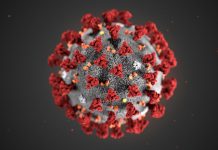by Dr. Clearie
If you currently suffer with peripheral neuropathy, you are already aware of the pain, dysfunction and lifestyle disruption that occurs. Even the name makes this condition sound painful…Initially the symptoms may be barely detectable yet over time can get worse and lead to significant reduction of independence.
Peripheral neuropathy (PN) is a severe disorder of your nerves. While it is true that diabetes accounts for many cases, oftentimes, peripheral neuropathy is unable to be linked to a specific factor. With that being said, this condition can be caused by medications such as statin drugs or chemo therapy, exposure to poisons and toxic substances, vitamin deficiencies, trauma, compression of nerves, auto-immune conditions, tumors, infections and other diseases such as kidney disease, liver disease, connective tissue disorders and potentially, underactive thyroid (hypothyroidism). What also appears to be a significant factor is the role poor circulation plays in the severity of this condition. This last one is a huge problem across the board! Peripheral neuropathy effects the legs, feet, arms and hands. Symptoms include: loss of balance, tingling, restless legs, numbness, burning, freezing, weakness and throbbing pain. Not fun. Additionally, swelling, discoloration, fatigue and “heavy” feelings of limbs can occur. It can be common to experience extreme sensitivity to even light touch. I have patients who describe feeling like they are wearing socks when they clearly are not. To make matters worse, blood pressure abnormalities can occur and, of course, difficulty with sleep and routine activities of daily living further complicate this upsetting condition.
Some present to my office with thinking that they may just have sciatica or pinched nerves. They could and often do. However, while compression of sensitive nerve tissue is always evaluated for in my practice, PN goes significantly beyond and such cases require an advanced, multi-factorial, clinical type of approach.
With all this being said, neuropathies are a challenge to treat. In the more advanced stages, I find that treatment is successful if even only 25 or 50 percent improvements are made. Remember, this condition is not only how you feel but also about being completely unable to live your life as you want too. With PN, even simple tasks are a burden.
I recently observed a glaring example of how PN can disrupt the quality of life. I was travelling through Massachusetts recently and stopped at a country diner. My wife and I saw a middle-aged gentleman painfully climb from his vehicle. Due to his poor balance and apparent weakness, he needed to cling to the door of his vehicle, and then shuffle down his hood. He grabbed onto bushes until he finally got to the walkway rails to the front door and just about collapsed on the front counter as he ever-so-slowly made his way into the restaurant. This gentleman’s legs were reddish/brown, swollen and significant varicose veins were protruding. My wife was upset to see it and candidly so was I.
From my natural perspective, once appropriately evaluated with a thorough history, blood work, circulatory evaluation and sensory exam, peripheral neuropathy can be likely improved upon. I recommend and utilize various FDA approved devices such as near infra-red lasers and nerve regeneration devices, vibration therapy, circulation improving techniques, along with a proven metabolic program geared towards neuropathy. A side note needs to be made in that the Cancer Centers of America also use one of the techniques that I administer.
This is a big topic and all the nuances cannot be addressed in a single discussion. Please know that PN can be serious and debilitating; however you do have choices and possible avenues to obtain relief and improve your quality of life. My best to you.
“Natural Perspective” is a health commentary only and does not claim to diagnose and/or make treatment recommendations. Always seek the advice of your health care professional.









